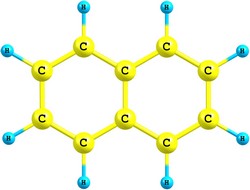Hydrogen and polycyclic aromatic hydrocarbons
The HPAH (Hydrogen interaction with polycyclic aromatic hydrocarbons – from interstellar catalysis to hydrogen storage) project has demonstrated and investigated the catalytic activity of PAHs in molecular hydrogen formation under interstellar conditions. In the process, the team developed a method to engineer a band gap opening in graphene by hydrogen functionalisation. Surface science techniques were combined with theoretical calculations to achieve an atomic-level understanding of the interaction between atomic hydrogen and PAH molecules. Thermal desorption spectroscopy allowed the project to monitor how H atoms are added to PAH molecules, forming superhydrogenated PAH species. Experiments showed that long-time exposure of the PAH molecule coronene to a beam of atomic hydrogen results in surprisingly high levels of hydrogenation, approaching the theoretical upper limit of one extra H atom per carbon atom. The formation of PAHs with such high degrees of superhydrogenation has important implications for interstellar molecular hydrogen formation. That is, calculations show that efficient formation of hydrogen gas should proceed by a combination of superhydrogenation and abstraction reactions involving neutral PAHs and their superhydrogenated forms. By using the deuterium isotope of hydrogen it was possible to monitor the exchange between the initial H atoms on the PAH molecule and incoming D atoms from the atom beam. Measurements show evidence of such exchange reactions. The observation of H-D exchange reactions provides the first indirect evidence of catalytic activity of PAH molecules in molecular hydrogen formation. Scanning tunnelling microscopy experiments provided images of superhydrogenated species with submolecular resolution, enabling the assignment of specific hydrogen reaction sites on the PAH molecule. The data show that H atoms react on several different sites on the molecule. The project used graphene as a model system for studying H interaction with very large polycyclic aromatic systems. These investigations revealed that the substrate supporting graphene greatly influences the hydrogenation process. Ultraviolet photoemission spectroscopy measurements demonstrated that a band gap of at least 450 meV is opened in graphene by the hydrogen nanopatterns. Hence, these investigations have led to the only method so far for opening up a band gap in large-area single-layer graphene that is sufficiently large for practical applications.



